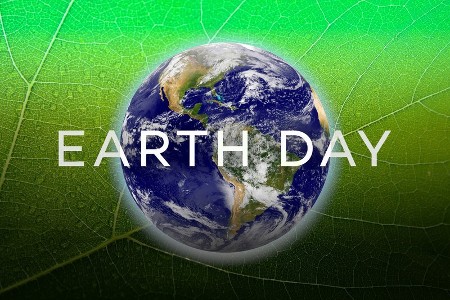Today is the annual environmental right of passage we call Earth Day which was first celebrated on April 22, 1970. Fifty-one years later, our Earth is more threatened by us than ever. Having said that, our awareness of the heavy footprint humanity is making on the planet is more transparent as well.
The Biden administration in Washington, DC, chose Earth Day symbolically to begin two days of a virtual summit with world leaders gathered to discuss climate change. In the last week, the U.S. government set a 50 to 52% greenhouse gas (GHG) reduction target from levels in 2005 by 2030. Meanwhile, in the run-up to this Earth Day summit, Canada announced a 40 to 45% reduction from 2005 levels in GHGs with 2030 the target date. The European Union’s target over the same period is 55%, and the United Kingdom has pledged a 78% reduction from 1990 levels by 2035 just to be different.
When Al Gore began his personal crusade to alert the world to the perils of GHGs, climate change leadership looked a lot like the former Vice President, white, older, and upper-middle class. But today climate change is seen in the context of social justice. In an article by Adam Sobel appearing in this week’s Bulletin of the Atomic Scientists, he writes that today’s climate movement “recognizes that the harms resulting from unfettered burning of fossil fuels are disproportionately felt by those already at greatest disadvantage (including nonhuman species and future human generations, as well as those marginalized along racial and economic lines today), while the benefits go to the most privileged, and that some very powerful coalitions are fighting to prevent any remedy, even as they may be sponsoring Earth Day events.”
A few years ago when we celebrated Earth Day it was all about shutting off the lights for a few hours, doing a clean-up of local parks, waxing poetic about recycling, and watching nature documentaries. But that is not where we are today as atmospheric temperatures are well on their way to breaching the 1.5 Celsius (2.4 Fahrenheit) degree rise that is the lower limit set by the nations of the world who signed on to the Paris Climate Agreement in 2015.
The current rise in atmospheric temperatures which is approaching 1.2 Celsius (2.1 Fahrenheit), represents a threat to food security with a 21% reduction in global agricultural productivity since 1961. In the April 1, 2021 edition of Nature Climate Change, researchers from Cornell, University of Maryland, and Stanford describe a slowdown in agricultural output equivalent to losing “the last 7 years of productivity growth” with the conditions even more severe in warmer regions of the planet amounting to “a reduction of 26 to 34%.”
Stated Ariel Ortiz-Bobea, Associate Professor at Cornell, and lead author of the above-cited paper is quoted in SciTech Daily stating “Most people perceive climate change as a distant problem…But this is something that is already having an effect. We have to address climate change now so that we can avoid further damage for future generations.”
The researchers with backgrounds in science and economics developed an econometric model that linked weather, productivity, and climate data collected over 60 years to come up with a new metric using an old term, total factor productivity (TFP), more often associated with manufacturing, capitalization, and labour input to determine output. In calculating agricultural productivity growth Ortiz-Bobea stated, “We find that climate change has basically wiped out about seven years of improvements in agricultural productivity over the past 60 years. It is equivalent to pressing the pause button on productivity growth back in 2013 and experiencing no improvements since then. Anthropogenic climate change is already slowing us down.”
The negative impact of anthropogenic climate change on agricultural productivity cannot be ignored. It is tied to sustainable food production and the raising of global living standards. With world population now at 7.9 billion and expected to grow to 9.9 billion by 2050, declines in agricultural productivity will have a profound impact on humanity. And with greater declines in countries in Africa, Central and South America, and South Asia, where temperature extremes will be even more impactful, the threat to food security will be that much worse.
So we need to pay attention to the pledges made by participating countries coming out of this two-day virtual summit called for by Joe Biden on Earth Day. And we need to hold our leaders’ feet to the fire to ensure that we meet or exceed the GHG emission reductions they set. This Earth Day, the planet needs all of us to be paying greater attention than ever before.









